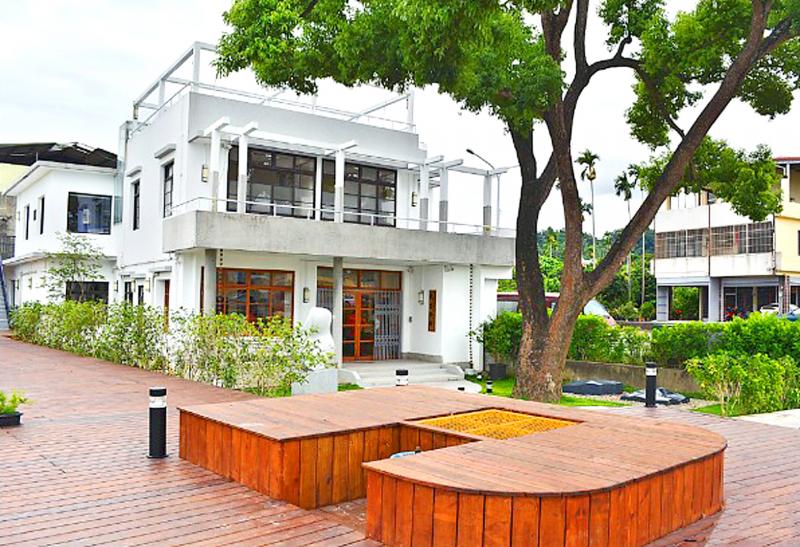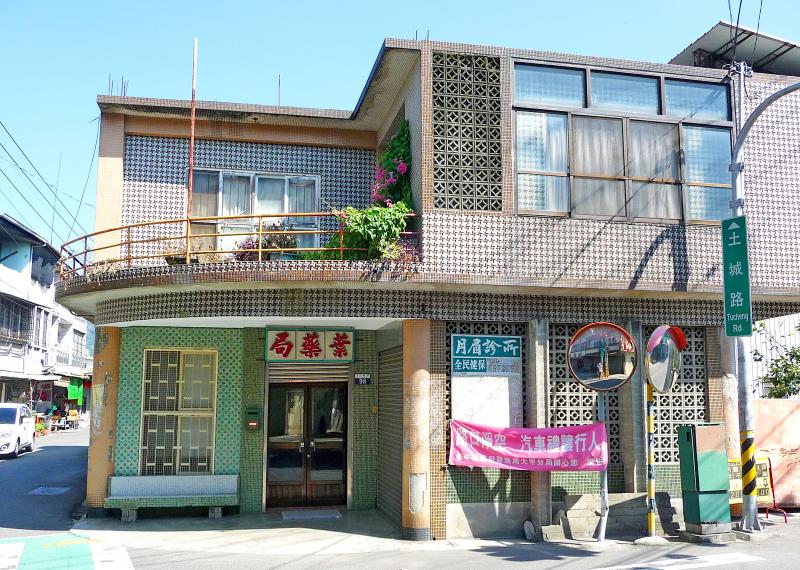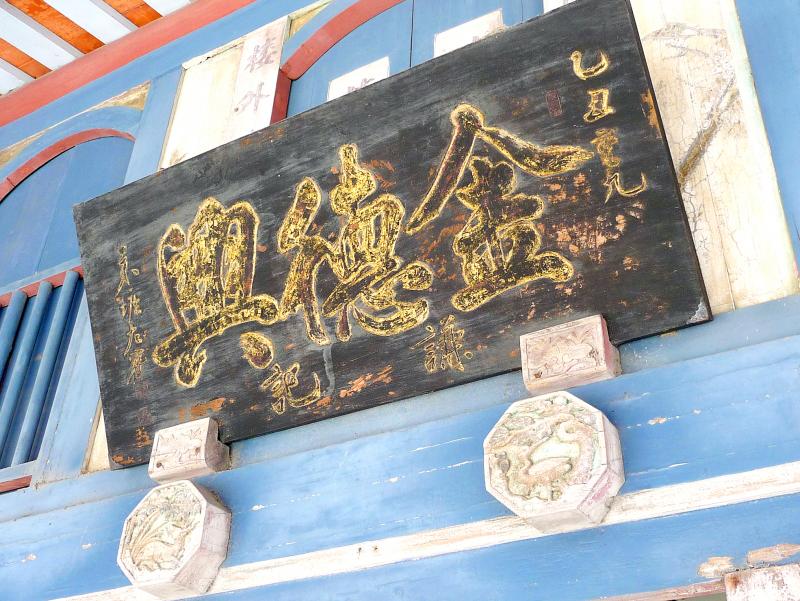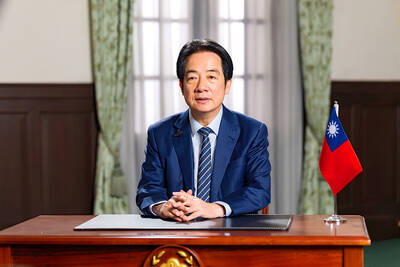In terms of life expectancy for its citizens, in recent decades Taiwan has caught up with and overtaken a number of Western countries. According to the most recent edition of the CIA’s World Factbook, Taiwanese now live longer than Americans, Czechs and Poles. Of course, the ongoing COVID-19 pandemic may shake up the rankings.
Taiwan’s single-payer healthcare system, set up in 1995, is one reason why people here can stay healthy for a long time. Before the postwar Chinese Nationalist Party (KMT) regime introduced the piecemeal health-insurance schemes (covering government employees, farmers, and others) that preceded the universal system, sick people often had to bear all the costs of treatment.
During the late 19th and 20th centuries, countless Taiwanese benefited from free medical services provided by Christian missionaries. The most famous of these foreign medics was George Mackay, a Canadian Presbyterian based in Tamsui (淡水), now part of New Taipei City, from 1872 until his death in 1901.

Photo: Lai Hsiao-tong
Mackay, who is especially renowned for removing thousands of rotten teeth, devoted a chapter of his book From Far Formosa to medical practices in Taiwan prior to the Japanese takeover (1895-1945). In that era, anyone could claim to be a physician.
“There are no authorized schools of medicine, no examinations, and no degrees. Custom is the only law, and success the only diploma,” Mackay wrote.
Offering an alternative to what he called “ignorant quackery,” Mackay founded a clinic at 6 Mackay Street in Tamsui. The original single-story Fujian-style building, completed in 1879, is still standing. At normal times, it’s open to the public 11am to 6pm from Monday to Thursday and from 11am to 9pm from Friday to Sunday. (New Taipei City Government announced a 14-day “coronavirus closure” of public facilities including museums from March 20. This could be extended, so call (02) 2629-2515 before visiting.)

Photo: Chen Chien-chih, Taipei Times
Hobe Mackay Hospital (滬尾偕醫館), as the clinic was known, is the forerunner of Mackay Memorial Hospital (馬偕紀念醫院) in Taipei. Hobe is the Taiwanese pronunciation of Tamsui’s old name, Huwei (滬尾). If you’re able to get inside, you’ll find displays about Mackay and his work, old medical instruments, and other interesting artefacts.
RURAL CLINICS
Just as population outflows and improved transportation links have led to the closure of several schools in Taiwan’s countryside, many clinics and pharmacies in rural areas have also been wound up.

Photo: Steven Crook
One I stumbled across by accident is in Taichung’s Waipu District (外埔區). Yeh’s Drugstore (葉藥局), at the intersection of Tucheng Road (土城路) and Tucheng West Road (土城西路), looks as though it was built in the early 1960s.
When I was there earlier this year, the building had shed a few wall tiles, but otherwise looked fairly well maintained and still lived in. Curious if the layout of the front room hinted at its former role, I peered inside. There was nothing resembling a prescription window; it looked like the living room of any cultured, well-to-do family.
About 40km due south of Yeh’s Drugstore, Minsheng House of Microhistory (霧峰民生故事館) was constructed in the late 1950s to be both the home and the workplace of a physician named Lin Peng-fei (林鵬飛, 1920-2010). It’s currently open 9am to 5pm Tuesday to Sunday; call (04) 2339-1556 to confirm before traveling.

Photo: Steven Crook
Some years after the general practitioner’s death, this two-floor concrete building — not far from the 921 Earthquake Museum of Taiwan (921地震教育園區) in Wufeng District (霧峰區) in the southernmost part of Taichung — was purchased by the local farmers’ association. Following a thorough renovation funded by the association, some of the rooms were turned into exhibition spaces.
A few of the items on display were used by Lin himself. Others were donated by some of Taiwan’s most notable medical-intellectual families.
An upstairs room focuses on the sinking of the Shinsei Maru on Jan. 12, 1945. The Japanese vessel was sailing toward Indochina when it was attacked by US warplanes. There were 247 Taiwanese, among them 41 doctors, were among those killed; several had been Lin’s classmates in the medical school of Taihoku Imperial University (now National Taiwan University). Amid the maps, photos, and models, there’s a Rising Sun flag autographed by Taiwanese servicemen.

Photo: Steven Crook
DRUG STORES
Traditional Chinese Medicine (TCM) is still popular in Taiwan, even though the number of TCM apothecaries has halved since the late 1990s. What is possibly Taiwan’s most attractive former TCM clinic is in Houbi District (後壁區) in Tainan.
What’s variously known as the Ruan Family Old House (阮家古厝) or Jing De Hsing Drug Store (金德興藥舖) is at no. 191 on Jingliao Old Street (菁寮老街), a thoroughfare rich in old-time character.
It’s claimed the building has been here since at least 1795. If that’s true, it’s obviously undergone extensive remodeling and rebuilding. Concrete wasn’t used for construction until the Japanese period, yet four concrete columns support the eaves at the front. The entire facade is wood, however, as is the greater part of the side and back external walls. Because of Taiwan’s climate — and its voracious termites — very little woodwork lasts more than a century.
How much, if any, of what stands today is original doesn’t matter. This is a highly alluring one-and-a-half-story structure. Each time I come here, I study the woodcarvings and painted panels that face the street. Inside, there’s a steep, narrow staircase up to the attic (off limits to visitors). In the days of old, the upstairs would have been used for storage or as sleeping quarters.
No one has purchased medicine at Jing De Hsing Drug Store for a very long time. Nonetheless, the tools of the Chinese herbalist’s trade remain in place. There are mortars and pestles; vials, jars, and bottles; and sets of drawers labeled so the physician could quickly find what he needed.
Many of the labels are so faded as to be illegible, but those who can read Chinese will notice drawers set aside for: dried “land dragon” (地龍干, eviscerated earthworms, thought to be effective against pain and certain kinds of arthritis); spider brake (鳳尾蕨, the herb of a fern); and Perilla frutescens (紫蘇梗, a species related to mint; after drying and slicing, the stem is used to treat vomiting and stomach cramps).
Ruan Family Old House belongs to descendants of the last TCM doctor who practiced here. Generously, they usually keep the door open and don’t mind outsiders looking around. If you arrive and it’s locked up, all you can do is hope it’ll be open next time you’re in the area.
Steven Crook has been writing about travel, culture, and business in Taiwan since 1996. He is the co-author of A Culinary History of Taipei: Beyond Pork and Ponlai, and author of Taiwan: The Bradt Travel Guide, the third edition of which has just been published.

This month the government ordered a one-year block of Xiaohongshu (小紅書) or Rednote, a Chinese social media platform with more than 3 million users in Taiwan. The government pointed to widespread fraud activity on the platform, along with cybersecurity failures. Officials said that they had reached out to the company and asked it to change. However, they received no response. The pro-China parties, the Chinese Nationalist Party (KMT) and Taiwan People’s Party (TPP), immediately swung into action, denouncing the ban as an attack on free speech. This “free speech” claim was then echoed by the People’s Republic of China (PRC),

Most heroes are remembered for the battles they fought. Taiwan’s Black Bat Squadron is remembered for flying into Chinese airspace 838 times between 1953 and 1967, and for the 148 men whose sacrifice bought the intelligence that kept Taiwan secure. Two-thirds of the squadron died carrying out missions most people wouldn’t learn about for another 40 years. The squadron lost 15 aircraft and 148 crew members over those 14 years, making it the deadliest unit in Taiwan’s military history by casualty rate. They flew at night, often at low altitudes, straight into some of the most heavily defended airspace in Asia.

Many people in Taiwan first learned about universal basic income (UBI) — the idea that the government should provide regular, no-strings-attached payments to each citizen — in 2019. While seeking the Democratic nomination for the 2020 US presidential election, Andrew Yang, a politician of Taiwanese descent, said that, if elected, he’d institute a UBI of US$1,000 per month to “get the economic boot off of people’s throats, allowing them to lift their heads up, breathe, and get excited for the future.” His campaign petered out, but the concept of UBI hasn’t gone away. Throughout the industrialized world, there are fears that

The Democratic Progressive Party (DPP) controlled Executive Yuan (often called the Cabinet) finally fired back at the opposition-controlled Legislative Yuan in their ongoing struggle for control. The opposition Chinese Nationalist Party (KMT) and Taiwan People’s Party (TPP) acted surprised and outraged, but they should have seen it coming. Taiwan is now in a full-blown constitutional crisis. There are still peaceful ways out of this conflict, but with the KMT and TPP leadership in the hands of hardliners and the DPP having lost all patience, there is an alarming chance things could spiral out of control, threatening Taiwan’s democracy. This is no